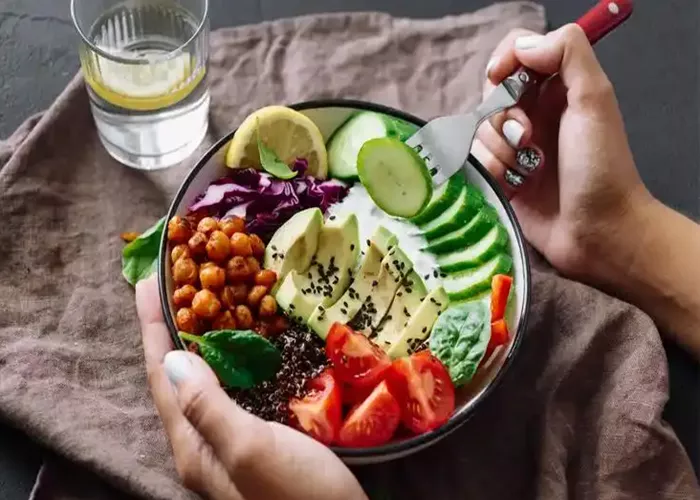Fitness enthusiasts often pay close attention to their diets, ensuring they consume foods that support their training and recovery. Cold dishes, often overlooked, can be an excellent addition to a fitness-focused menu. They can provide essential nutrients, aid in hydration, and even help with muscle recovery. In this article, we’ll explore what cold dishes are suitable for fitness and how they can benefit your training and overall health.
Understanding Cold Dishes
Cold dishes, as opposed to hot dishes, are typically served at room temperature or chilled. They can range from salads and sushi to cold soups and appetizers. Cold dishes are often associated with lighter, healthier options, making them a great choice for fitness-conscious individuals.
Benefits of Cold Dishes for Fitness
Hydration: Cold dishes can help keep you hydrated, which is crucial for fitness. Exercise can lead to dehydration, and consuming chilled foods can help replenish lost fluids.
Nutrient Density: Many cold dishes are packed with essential nutrients like vitamins, minerals, and antioxidants. These nutrients support immune function, aid in muscle recovery, and promote overall health.
Low in Calories: Cold dishes, especially salads, can be lower in calories compared to hot dishes. This makes them an excellent choice for those looking to manage their weight or reduce calorie intake.
Ease of Preparation: Cold dishes are often easier to prepare than hot dishes, making them a convenient option for busy fitness enthusiasts.
Suitable Cold Dishes for Fitness
Salads
Leafy Green Salads: Salads made with leafy greens like spinach, kale, and arugula are packed with vitamins and minerals. They can be topped with lean proteins like grilled chicken or tofu, healthy fats like avocado or nuts, and a light dressing to keep them flavorful and satisfying.
Vegetable Salads: Salads featuring a variety of vegetables, such as cucumbers, tomatoes, bell peppers, and carrots, provide a range of nutrients and can be customized to suit individual preferences. Add some protein and healthy fats to make them more filling.
Quinoa Salad: Quinoa is a high-protein, gluten-free grain that makes a great base for a cold salad. Combine it with vegetables, legumes, and a light dressing for a nutritious and satisfying meal.
Cold Soups
Gazpacho: This refreshing Spanish soup is made with tomatoes, cucumbers, bell peppers, onions, and garlic, blended together and served chilled. It’s low in calories and high in vitamins and antioxidants.
Vichyssoise: A creamy cold soup made with potatoes, leeks, and cream, often served chilled. While it’s higher in calories, the combination of potatoes and leeks provides essential nutrients and a creamy texture that can be satisfying.
Sushi and Sashimi
Sushi: Made with vinegar-flavored rice and raw fish or seafood, sushi is a low-calorie, high-protein option that’s perfect for fitness. Be mindful of the sauces and toppings, as they can add extra calories.
Sashimi: Similar to sushi but without the rice, sashimi is an excellent source of lean protein and omega-3 fatty acids, which are beneficial for heart health and muscle recovery.
Appetizers and Side Dishes
Fruit Salad: A colorful and refreshing mix of fruits like berries, melon, and grapes provides natural sweetness and essential vitamins and minerals. It’s a great option for a light meal or snack.
Greek Yogurt with Berries: Greek yogurt is high in protein and probiotics, which support gut health. Top it with berries for added antioxidants and flavor.
Marinated Vegetables: Vegetables like cucumbers, bell peppers, and carrots can be marinated in a light vinaigrette and served chilled. They’re low in calories and high in vitamins and minerals.
Tips for Making Cold Dishes Fitness-Friendly
Watch the Dressing: While a light dressing can enhance the flavor of a salad, be mindful of the calories and ingredients. Opt for homemade dressings made with olive oil, vinegar, and a touch of honey or mustard for a healthier option.
Portion Control: Even though cold dishes can be lower in calories, portion control is still important. Be mindful of how much you’re eating and consider pairing your cold dish with a lean protein or healthy fat to keep it satisfying.
Experiment with Ingredients: Don’t be afraid to experiment with different ingredients and flavors. Cold dishes can be as diverse and flavorful as hot dishes, and there’s no limit to the combinations you can try.
Plan Ahead: Cold dishes can be easily prepared in advance, making them a great option for meal prep. Prepare a few different cold dishes at the beginning of the week and enjoy them throughout the week for a convenient and healthy meal option.
Conclusion
Cold dishes can be a valuable addition to a fitness-focused diet. They provide essential nutrients, aid in hydration, and can be lower in calories compared to hot dishes. By choosing a variety of cold dishes, such as salads, cold soups, sushi, and appetizers, you can enjoy a diverse and flavorful menu that supports your fitness goals. Remember to watch the dressing, control portions, experiment with ingredients, and plan ahead to make cold dishes a convenient and healthy part of your diet.
Related topic:


